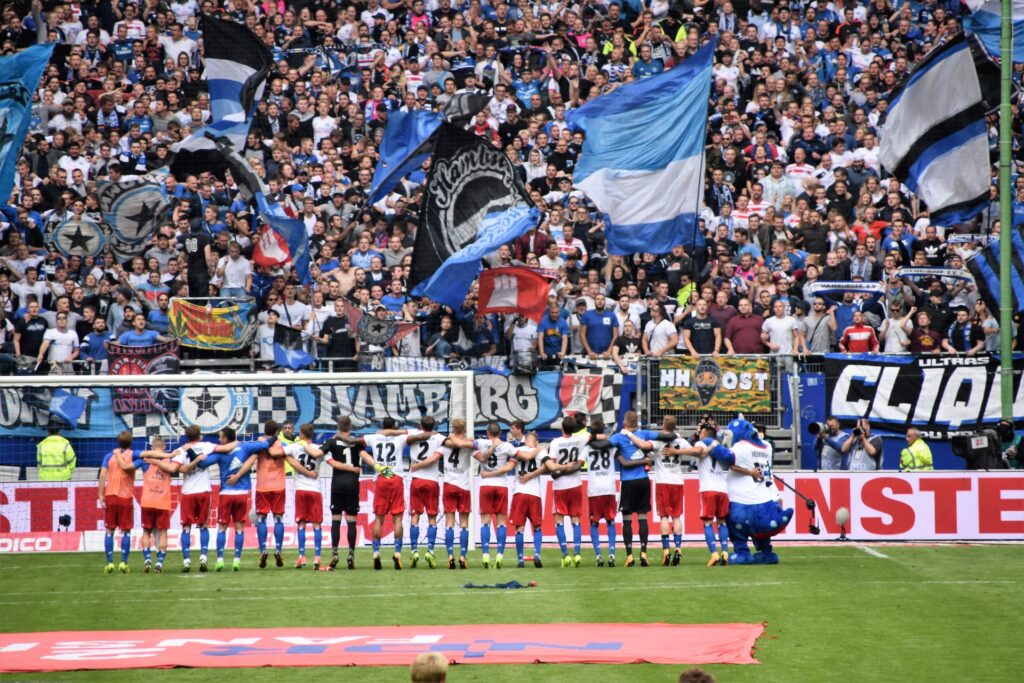Ask a European soccer fan what their league’s draft system is like, and they might stare blankly or confusedly at you.
Draft days in North America are special occasions that attract millions of viewers across several sports, but does that include soccer?
So, is there a draft in soccer?
Yes, MLS has a SuperDraft which allows clubs to select the best collegiate prospects from a pool of players who enter that draft.
The SuperDraft is held every January and is open to all MLS teams to select players who’ve been playing for an American college team.
There appears to be no other professional soccer league that has a draft system, making MLS unique in this aspect.
How does the MLS SuperDraft work?
The format works so that the worst performing team from last season gets the first pick of each round and the MLS Cup winners from last season make the final selection of each round. The draft order can change if clubs strike a deal with one another to trade picks in current and future drafts.
Upon selection, the club and player need to agree on contract terms, but it’s rare to find a college prospect who rejects an offer.
When there is a league expansion, the league holds an expansion draft. An expansion draft is due to take place in November this year due to St. Louis City SC entering the league to become the 29th team.
Where the expansion draft differs from the SuperDraft is that, during an expansion draft, the new club can pick players from other clubs in the league to sign for them, with specific regulations regarding the number of selections from each club and other rules.
As a new franchise with only a select number of players taken from other franchises, St. Louis City SC automatically selects first in January’s SuperDraft.
Do any other leagues have a draft in soccer?

No professional soccer league outside of MLS has a draft system.
Traditionally, soccer has never had a draft system. MLS is a newer league than a lot of its European or South American counterparts who’ve refused to adopt the draft system and instead have academies and vast scouting networks.
There are draft systems in other sports, however. As we know, the NFL, NHL, MLB, and NBA all have draft processes that are huge television events.
Further afield, Australian Rules Football and The Hundred tournament in cricket have draft systems based on similar principles as North America.
Interestingly, the Indian Premier League cricket tournament holds an annual auction for clubs to sign players at an event somewhat similar to a draft. This is also subject to a salary cap.
What is the point of a draft in sports?
The primary reason for leagues to have a draft is to keep the competition as fair as possible. The logic behind this is good because, as most fans of other sports in the US are aware of, the worst-performing team from the most recent season gets to choose the first player in the draft.
North American professional sports leagues don’t have a relegation or promotion system like there is in Europe. The rationale tends to be that fans should have hope for the upcoming season, if their club has just performed badly, by selecting better players to try and even things out.
Draft systems don’t allow the winners from the year before to get unreasonably stronger than their competitors either. When you consider the format in European soccer, the winners get the most prize money and are in a position to strengthen their team even further compared to teams who’ve finished below them.
Is a draft a good way of making sports fairer?
Mostly, the draft system is an effective way of making things as even as possible, but other aspects of MLS contradict what the draft is there to achieve.
David Beckham’s signing for LA Galaxy was interesting, not least because it paved the way for the league to introduce a new policy that would allow clubs to spend beyond the league’s salary cap limits on three ‘superstars.’
Big names such as Steven Gerrard, Gareth Bale, Lorenzo Insigne, Thierry Henry, and the aforementioned David Beckham, to name a few, have made some wonder whether the draft is now largely redundant in soccer.
While the model of the draft might appear sustainable within MLS because it’s objectively a clear and achievable pathway from youth level to professional level for young players, so few drafted players actually make a significant impact in MLS to support the draft process, so it’s hard to justify that it levels the playing field.
MLS is unique in its draft format, at least in soccer anyway. We all know that the USA has, by most metrics, the biggest football, basketball, baseball, and ice hockey leagues globally, but that’s not the case in soccer.
Using the NFL as an example, there are no other football leagues that are comparable to that of the NFL in terms of player salaries, audience numbers, sponsorship and TV deals, etc. The best players want to play in the NFL. The same is largely true for the NBA, MLB, and NHL.
Therefore, the draft system works brilliantly in the NFL because the very best prospects all come through the US collegiate system, and there is no external market for them to achieve greater goals or earn more money abroad.
Whereas, MLS is under no illusions that certain leagues in Europe and South America are considered to be of a higher standard and often have no salary cap rules enforced on them.
The threat of the best North American talents going overseas to propel their career has a major impact on MLS clubs and how relevant the draft is given soccer’s global network.
Is there a draft in the major European soccer leagues?
No, there isn’t a draft system in any of the main European soccer leagues. The very concept of a draft is a little alien to Europeans. Professional sports in the USA are closely tied to their collegiate sports system. The same can’t be said of European professional sports.
Academies are prevalent throughout Europe, so rather than a young prospect spending their formative years developing through a school’s sports system with whom they have a scholarship, the young person’s education and soccer development would remain completely separate.
Until a player reaches adulthood, they are typically on a youth contract with a club. Assuming the club is fully professional, they can offer their academy players professional contracts when they are of age (17 in England, for instance) without the need to draft them.
Players can easily move from academy to academy as long as the player’s parents grant consent to do so and the former academy club receives a compensation fee from the new academy club.
Soccer clubs with strong resources tend to have extensive scouting networks used to approach the brightest talents from across the globe to either join their academy or the first-team squad. The further afield you look, the better the bargain could be.
Recap: The draft in soccer
There are positives and negatives to the draft system, but question marks remain regarding whether soccer is the right sport to use drafting in.
Regardless, it’s an interesting and original concept designed to rebalance a league’s power dynamic and a system that can help promising players find ways into the sport professionally.

